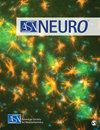小鼠中枢神经系统石蜡切片铁的强化组织化学检测
IF 3.7
4区 医学
Q2 NEUROSCIENCES
引用次数: 28
摘要
检测啮齿动物大脑中铁的组织化学方法主要是标记少突胶质细胞,但由于所有细胞都利用铁,这一观察结果表明,中枢神经系统中的大部分铁未被检测到。组织的石蜡包埋是一个标准的程序,用于准备切片进行显微分析。在目前的研究中,我们质疑是否可以修改铁组织化学程序,以便在石蜡切片中更好地检测铁。事实上,各种修饰导致了老鼠脑组织中铁的广泛标记(例如,神经元和神经细胞的标记)。灶性浓度的部位,如细胞质点状或核仁染色,也被观察到。将修改后的程序应用于阿尔茨海默病小鼠模型(APP/PS1)的石蜡切片。铁元素出现在斑块的核心和边缘。斑块边缘呈纤维状或颗粒状,常含有铁标记细胞。进一步的分析表明,铁与斑块的核心紧密相关,但与边缘的关系不大。总之,对组织化学染色的修改揭示了铁在中枢神经系统沉积的新见解。理论上,这种方法应该可以转移到大脑以外的器官和其他物种,其基本原理应该可以纳入各种染色方法中。本文章由计算机程序翻译,如有差异,请以英文原文为准。
Enhanced Histochemical Detection of Iron in Paraffin Sections of Mouse Central Nervous System Tissue
Histochemical methods of detecting iron in the rodent brain result mainly in the labeling of oligodendrocytes, but as all cells utilize iron, this observation suggests that much of the iron in the central nervous system goes undetected. Paraffin embedding of tissue is a standard procedure that is used to prepare sections for microscopic analysis. In the present study, we questioned whether we could modify the iron histochemical procedure to enable a greater detection of iron in paraffin sections. Indeed, various modifications led to the widespread labeling of iron in mouse brain tissue (for instance, labeling of neurons and neuropil). Sites of focal concentrations, such as cytoplasmic punctate or nucleolar staining, were also observed. The modified procedures were applied to paraffin sections of a mouse model (APP/PS1) of Alzheimer’s disease. Iron was revealed in the plaque core and rim. The plaque rim had a fibrillary or granular appearance, and it frequently contained iron-labeled cells. Further analysis indicated that the iron was tightly associated with the core of the plaque, but less so with the rim. In conclusion, modifications to the histochemical staining revealed new insights into the deposition of iron in the central nervous system. In theory, the approach should be transferrable to organs besides the brain and to other species, and the underlying principles should be incorporable into a variety of staining methods.
求助全文
通过发布文献求助,成功后即可免费获取论文全文。
去求助
来源期刊

ASN NEURO
NEUROSCIENCES-
CiteScore
7.70
自引率
4.30%
发文量
35
审稿时长
>12 weeks
期刊介绍:
ASN NEURO is an open access, peer-reviewed journal uniquely positioned to provide investigators with the most recent advances across the breadth of the cellular and molecular neurosciences. The official journal of the American Society for Neurochemistry, ASN NEURO is dedicated to the promotion, support, and facilitation of communication among cellular and molecular neuroscientists of all specializations.
 求助内容:
求助内容: 应助结果提醒方式:
应助结果提醒方式:


